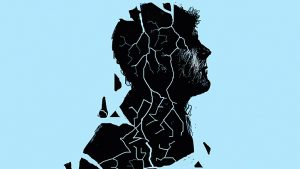Depression is not the usual felling of sadness anxious it much more than that, it’s one of the most common and dangerous mental illness in the world. In 2013, 19.7% of people in the UK aged 16 and over showed symptoms of anxiety or depression. With Depression those sad moods will last for longer periods which can interfere with your everyday life causing symptoms like:

- Feeling sad or “empty”
- insomnia
- Loss of interest
- Overeating, or not wanting to eat at all
- Not being able to sleep, or sleeping too much
- fatigue
- Feeling hopeless, irritable, anxious, or guilty
- Aches or pains, headaches, cramps, or digestive problems
- Thoughts of death or suicide
The word depression is actually just an term for a number of different forms and it can range from relatively minor to severe:
Major Depression
Major depression involves low mood and/or loss of interest and pleasure in usual activities. A Major Depressive episode may occur only once; but more commonly, several episodes may occur in a lifetime. There are different severities of major depressive disorder
- Mild: Although some of these symptoms and stress is evident, the disorder leads to only ‘minor impairment of social or occupational functioning’.
- Moderate: Symptoms lie somewhere between mild and severe.
- Severe: Many symptoms are present. The ‘intensity of symptoms is seriously distressing and unmanageable’.
Dysthymic disorder
Very similar symtomps to major depression however, with dysthymic disorder the symptoms may last for longer periods. A person with major depression for more than two years is diagnosed with dysthymia
Bipolar Disorder
Also called manic depression, this disorder is characterized by severe mood swings, at time a person would experience feeling of sadness and depression, at other time he may have periods of mania, with periods of normal mood in between. Mania is like the opposite of depression and can vary in intensity – symptoms include feeling great, having lots of energy, having racing thoughts and little need for sleep, talking fast, having difficulty focusing on tasks, and feeling frustrated and irritable.
Psychotic Depression
Psychotic depression is characterized by not only depressive symptoms, but also by hallucinations (seeing or hearing things that aren’t really there) or delusions (irrational thoughts and fears). Often psychotically depressed people become paranoid or come to believe that their thoughts are not their own (thought insertion) or that others can ‘hear’ their thoughts (thought broadcasting).
Postpartum Depression
This may occur after giving birth. This can trigger a range of powerful emotions, from excitement and joy to fear and anxiety. But it can also result in something you might not expect — depression. Many new moms experience the “postpartum baby blues” after childbirth, which commonly include mood swings, crying spells, anxiety and difficulty sleeping. Baby blues typically begin within the first two to three days after delivery, and may last for up to two weeks. But some new moms experience a more severe, long-lasting form of depression known as postpartum depression.
The Causes of Chronic Depression
The causes of depression are not known, however there are many factors that can trigger this mental illness:
- Brain chemistry – a number of brain regions have been implicated in dysthymia.
- Genetics – having a first degree relative with a depressive disorder increases the risk
- Environmental/life events – loss of a parent during childhood, traumatic events such as loss, financial problems, and high levels of stress can trigger dysthymia
- Personality traits that include negativity – low self-esteem, pessimistic, self-critical, dependent upon others
- History of other mental disorders.
Treatment
The best treatment is a combination of psychotherapy and medication.
Antidepressants, balance the chemicals in your brain. They raise levels of the hormone serotonin to lift your mood, help you sleep and make you feel less irritable. Dysthymia can be treated with various types of antidepressants, including:
- selective serotonin reuptake inhibitors (SSRIs), such as fluoxetine (Prozac) and sertraline (Zoloft)
- tricyclic antidepressants (TCAs), such as amitriptyline (Elavil) and amoxapine (Asendin)
- serotonin and norepinephrine reuptake inhibitors (SNRIs), such as desvenlafaxine (Pristiq) and duloxetine (Cymbalta)
You may need to try different medications and dosages to find an effective solution for you. This requires patience, as many medications take several weeks to take full effect. Talk to your doctor if you continue to have concerns about your medication. Your doctor may suggest making a change in dosage or medication. Never stop taking your medication as directed without speaking to your doctor first. Stopping treatment suddenly or missing several doses may cause withdrawal-like symptoms and make depressive symptoms worse.
Psychotherapy, will usually include emotional support and education about depression. Cognitive behavioral therapy is designed to examine and help correct faulty, self-critical thought patterns. Psychodynamic, insight-oriented or interpersonal psychotherapy can help a person sort out conflicts in important relationships or explore the history behind the symptoms.
Exercise, whether you want or need to lose a few pounds, feel the desire to get fit and trim, or have no urge at all to exercise, give it another thought. Exercise does more than just burn calories, melt away fat, spruce up the body’s cardiovascular and other systems. Exercising decreases stress hormones such as cortisol and produces endorphins, the body’s natural feel-good chemicals. Exercise also helps release adrenalin, serotonin, and dopamine. Together, these chemicals that exist naturally in the body help to elevate mood and result in a feeling of completion and relaxation which will help reduce some of the symptoms of depression.
